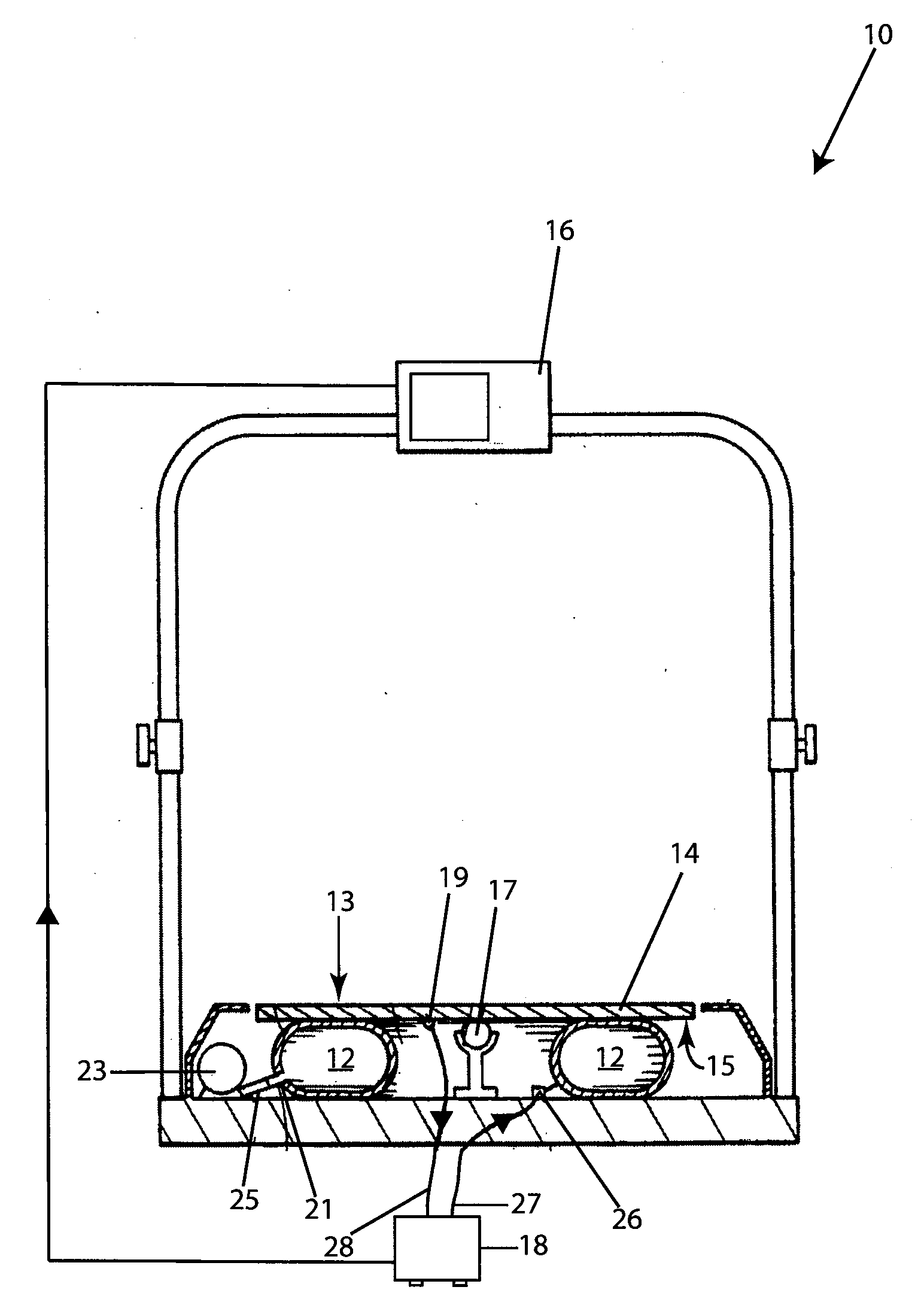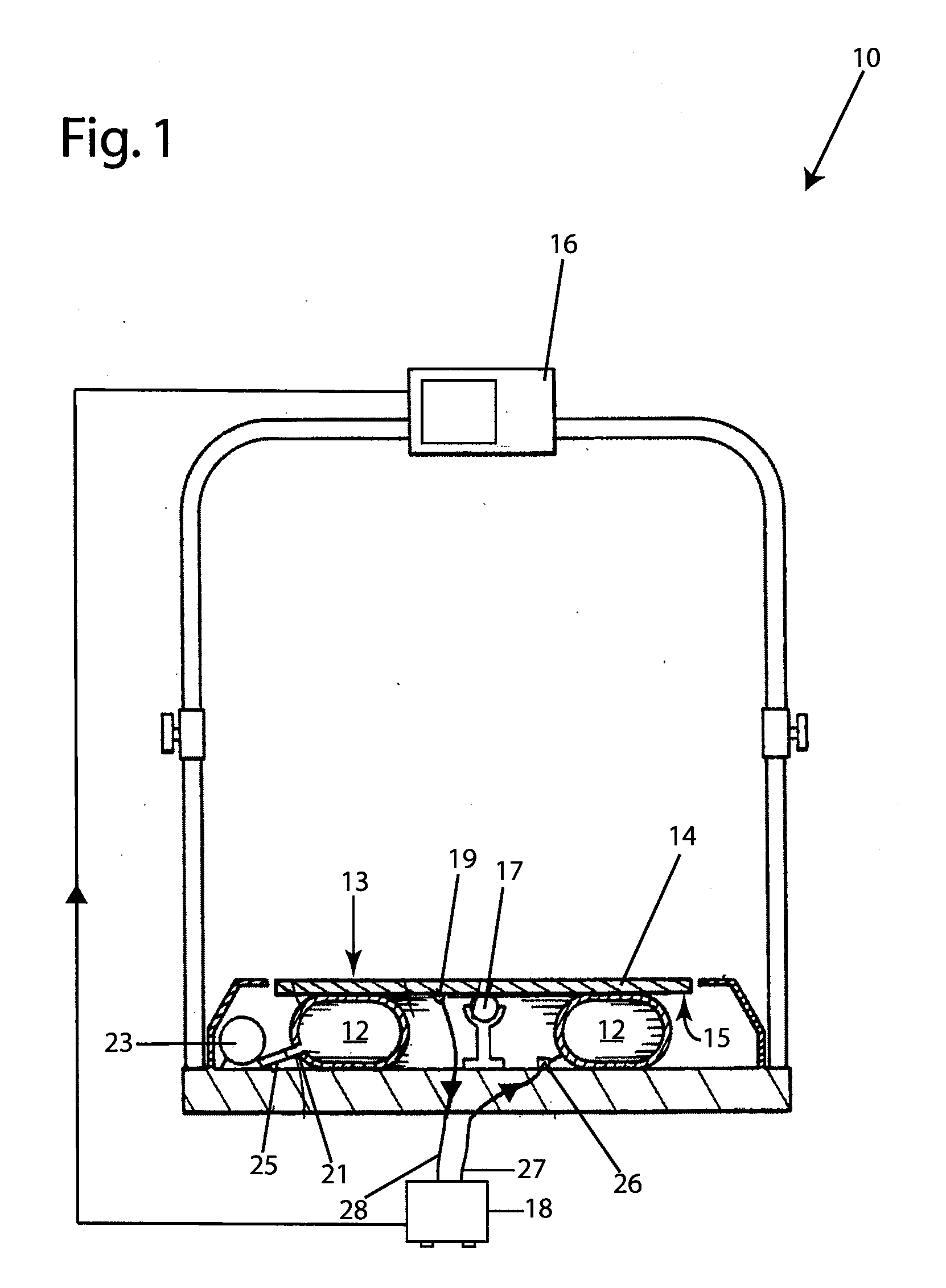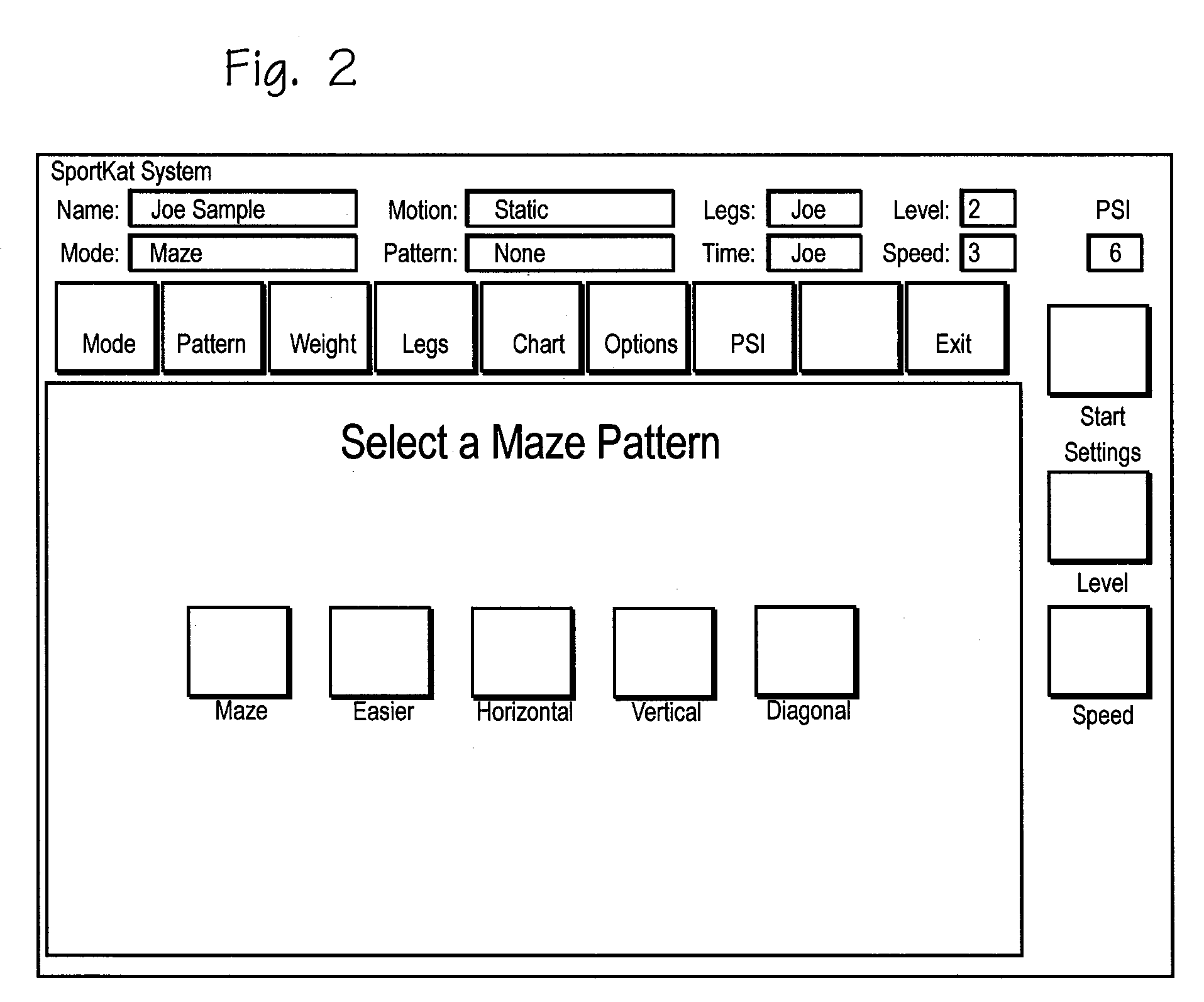System and Method of Balance Training
a technology of balance training and training method, applied in the field of balance function improvement, can solve the problems of less firm platform, increased or decreased training difficulty, and increased or decreased training difficulty, and achieve the effect of efficient balance training, increased or decreased training difficulty, and easy balance on the platform
- Summary
- Abstract
- Description
- Claims
- Application Information
AI Technical Summary
Benefits of technology
Problems solved by technology
Method used
Image
Examples
Embodiment Construction
[0023]FIG. 1 illustrates the balance training system 10. The balance training system 10 can comprise an inflatable bladder 12, a balance platform 14 comprising a platform disk 13 a bladder, a monitor 16, a control system 18, and a tilt sensor 19. The balance platform 14 rests atop of the inflatable bladder 12. The balance platform 14 is sized and dimensioned to accommodate an adult user standing on the top of the platform. The system may also have a pivot 17 located under the platform 14 to assist the bladder in providing varying degrees of stabilizing support beneath the platform 14. This assists the user in maintaining his position on the platform 14 surface.
[0024]The balance training system can contain a bladder 12 positioned beneath the centrally pivoted platform disc 13 that provides variable stability to the balance platform 14. The pressure in the bladder 12 can be adjusted according to training criteria or user preference. The pressure range in which the bladder is operable ...
PUM
 Login to View More
Login to View More Abstract
Description
Claims
Application Information
 Login to View More
Login to View More - R&D
- Intellectual Property
- Life Sciences
- Materials
- Tech Scout
- Unparalleled Data Quality
- Higher Quality Content
- 60% Fewer Hallucinations
Browse by: Latest US Patents, China's latest patents, Technical Efficacy Thesaurus, Application Domain, Technology Topic, Popular Technical Reports.
© 2025 PatSnap. All rights reserved.Legal|Privacy policy|Modern Slavery Act Transparency Statement|Sitemap|About US| Contact US: help@patsnap.com



